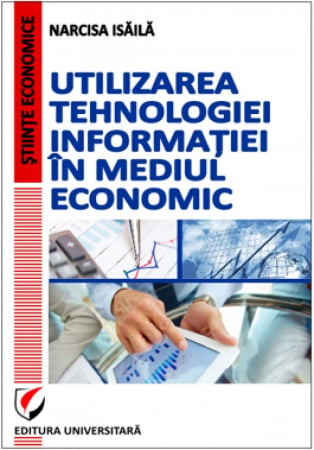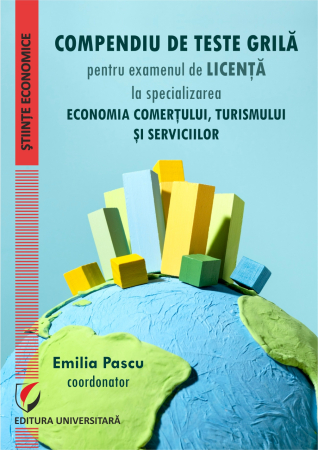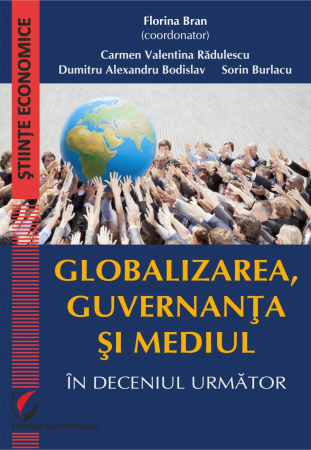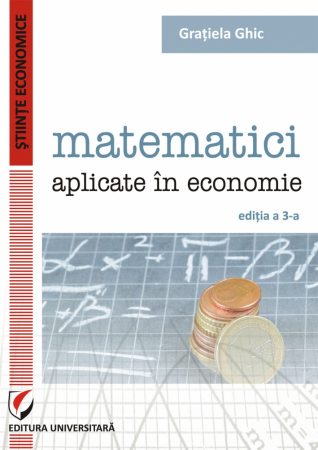Manuscript proposals: [email protected] / 0745 204 115 //// Tracking orders Individuals / Sales: 0745 200 357 / Orders Legal entities: 0721 722 783
Publisher: Editura Universitară
Author: Liviu - Stelian Begu
ISBN: 978-973-749-617-1
Publisher year: 2009
Edition: 1
Pages: 220
Product Code:
9789737496171
Do you need help?
0745 200 357
- Description
- Download (1)
- Authors
- Content
- More details
- Reviews (0)
International statistics is a statistical discipline that studies all the economic-social and cultural statistical indicators necessary for their comparability by groups of countries, by geographical regions or between countries.
International statistics envisages the establishment of economic-social statistical indicators necessary to ensure comparability by countries or groups of countries, according to different grouping criteria; elaboration of unitary statistical research methods worldwide; establishing the method for determining the general indicators at international level; studying the connection between the phenomena and processes of international economic and social relations and the development trends of these relations.
This course includes six chapters from different areas of economic and social activity, wanting to present as clearly as possible the main indicators of international comparative analysis. The course is addressed, first of all, to the students from the Faculty of International Economic Relations, the master's form, but also to all those who want to perform international comparative analyzes in economic or social fields of activity.
International statistics envisages the establishment of economic-social statistical indicators necessary to ensure comparability by countries or groups of countries, according to different grouping criteria; elaboration of unitary statistical research methods worldwide; establishing the method for determining the general indicators at international level; studying the connection between the phenomena and processes of international economic and social relations and the development trends of these relations.
This course includes six chapters from different areas of economic and social activity, wanting to present as clearly as possible the main indicators of international comparative analysis. The course is addressed, first of all, to the students from the Faculty of International Economic Relations, the master's form, but also to all those who want to perform international comparative analyzes in economic or social fields of activity.
-
Statistica internationala (Analize comparative)
Download
LIVIU-STELIAN BEGU
CHAPTER I
STATISTICS OF MACROECONOMIC RESULTS
1.1. The main macroeconomic indicators of results / 10
1.2. Price indices used in macroeconomic statistics / 16
1.3. Statistical indicators of external economic transactions / 24
1.4. Statistics of macroeconomic aggregates / 33
CHAPTER II
STATISTICS OF INTERNATIONAL POPULATION MOBILITY
2.1. Definition, history, notions, typology / 37
2.2. Labor force indicators calculated in national statistics / 40
2.3. Statistical indicators of migration / 46
2.4. Methods and techniques for estimating migration / 51
2.5. Current characteristics of migration / 54
2.6. Statistics of international migration of population / 57
CHAPTER III
QUALITY OF LIFE STATISTICS
3.1. Quality of life - a fundamental element of society / 67
3.2. Statistical indicators of quality of life / 71
3.3. The concept of poverty: characteristics, poverty lines, indicators / 88
3.4. Cost of living and social protection / 98
3.5. Statistics of quality of life / 104
CHAPTER IV
EXTERNAL PAYMENT BALANCE STATISTICS
4.1. The conceptual system of the B.P.E. and P.I.I. / 110
4.2. Defining the balance of external payments (B.P.E.) / 113
4.3. Defining the international investment position (P.I.I.) / 114
4.4 Concepts used to develop an external balance of payments / 116
4.5. The structure of the external balance of payments / 119
4.6. Statistical indicators for the analysis of the external balance of payments / 125
4.7. Statistics of balance of payments / 131
CHAPTER V
EXTERNAL DEBT STATISTICS
5.1. Notions and classifications used / 137
5.2. Indicators of the statistical analysis of external debt / 142
5.3. Statistics of external debt / 149
CHAPTER VI
INTERNATIONAL STATISTICS - STUDY CASE
6.1. Study case 1 Quality of life in Romania / 153
6.2. Study case 2 External debt: China vs. Romania / 164
6.3. Study case 3 The migration of Romanians to Spain / 177
8.4. Study case 4 Mobility of labor force in Israel / 188
ANNEX - DESCRIPTIVE STATISTICS / 215
BIBLIOGRAPHY / 219
STATISTICS OF MACROECONOMIC RESULTS
1.1. The main macroeconomic indicators of results / 10
1.2. Price indices used in macroeconomic statistics / 16
1.3. Statistical indicators of external economic transactions / 24
1.4. Statistics of macroeconomic aggregates / 33
CHAPTER II
STATISTICS OF INTERNATIONAL POPULATION MOBILITY
2.1. Definition, history, notions, typology / 37
2.2. Labor force indicators calculated in national statistics / 40
2.3. Statistical indicators of migration / 46
2.4. Methods and techniques for estimating migration / 51
2.5. Current characteristics of migration / 54
2.6. Statistics of international migration of population / 57
CHAPTER III
QUALITY OF LIFE STATISTICS
3.1. Quality of life - a fundamental element of society / 67
3.2. Statistical indicators of quality of life / 71
3.3. The concept of poverty: characteristics, poverty lines, indicators / 88
3.4. Cost of living and social protection / 98
3.5. Statistics of quality of life / 104
CHAPTER IV
EXTERNAL PAYMENT BALANCE STATISTICS
4.1. The conceptual system of the B.P.E. and P.I.I. / 110
4.2. Defining the balance of external payments (B.P.E.) / 113
4.3. Defining the international investment position (P.I.I.) / 114
4.4 Concepts used to develop an external balance of payments / 116
4.5. The structure of the external balance of payments / 119
4.6. Statistical indicators for the analysis of the external balance of payments / 125
4.7. Statistics of balance of payments / 131
CHAPTER V
EXTERNAL DEBT STATISTICS
5.1. Notions and classifications used / 137
5.2. Indicators of the statistical analysis of external debt / 142
5.3. Statistics of external debt / 149
CHAPTER VI
INTERNATIONAL STATISTICS - STUDY CASE
6.1. Study case 1 Quality of life in Romania / 153
6.2. Study case 2 External debt: China vs. Romania / 164
6.3. Study case 3 The migration of Romanians to Spain / 177
8.4. Study case 4 Mobility of labor force in Israel / 188
ANNEX - DESCRIPTIVE STATISTICS / 215
BIBLIOGRAPHY / 219
International statistics is a statistical discipline that studies all the economic-social and cultural statistical indicators necessary for their comparability by groups of countries, by geographical regions or between countries.
International statistics envisages the establishment of economic-social statistical indicators necessary to ensure comparability by countries or groups of countries, according to different grouping criteria; elaboration of unitary statistical research methods worldwide; establishing the method for determining the general indicators at international level; studying the connection between the phenomena and processes of international economic and social relations and the development trends of these relations.
This course includes six chapters from different areas of economic and social activity, wanting to present as clearly as possible the main indicators of international comparative analysis. The course is addressed, first of all, to the students from the Faculty of International Economic Relations, the master's form, but also to all those who want to perform international comparative analyzes in economic or social fields of activity.
International statistics envisages the establishment of economic-social statistical indicators necessary to ensure comparability by countries or groups of countries, according to different grouping criteria; elaboration of unitary statistical research methods worldwide; establishing the method for determining the general indicators at international level; studying the connection between the phenomena and processes of international economic and social relations and the development trends of these relations.
This course includes six chapters from different areas of economic and social activity, wanting to present as clearly as possible the main indicators of international comparative analysis. The course is addressed, first of all, to the students from the Faculty of International Economic Relations, the master's form, but also to all those who want to perform international comparative analyzes in economic or social fields of activity.
If you want to express your opinion about this product you can add a review.
write a review

6359.png)
![International Statistics (comparative analysis) [1] International Statistics (comparative analysis) [1]](https://gomagcdn.ro/domains/editurauniversitara.ro/files/product/large/statistica-internationala-analize-comparative-2627-434416.jpg)














